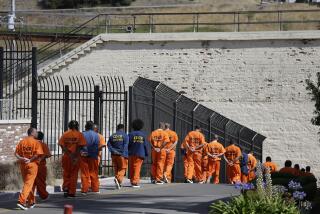Aftermath of Tough Drunk Driving Laws : Study Shows Limited Impact
- Share via
The national preoccupation with drunk driving that in the early 1980s spawned dozens of state get-tough laws may have had only fleeting effect.
That is the conclusion of a study on the results of get-tough drunk driving laws in two states--Maine and Massachusetts. And in California, statistics kept by the Highway Patrol indicate that a similar disappointing result may be occurring five years after a 1982 legislative crackdown spurred by such groups as Mothers Against Drunk Driving.
New, tougher laws, asserted a Boston University expert, may have been the wrong approach from the start. Instead, what should have been emphasized, according to Ralph Hingson, who headed the Maine-Massachusetts study, was more aggressive and consistent police enforcement of laws that already existed.
Several national studies--including one by the Insurance Institute for Highway Safety, a respected Washington research organization--are now under way in an effort to determine whether the Maine-Massachusetts findings are true nationally.
In retrospect, what the preoccupation with cracking down on drunk driving may have obscured, suggested Allan Williams, the Insurance Institute’s vice president for research, was that adequate laws to control driving while intoxicated were already on the books in almost every state before get-tough revisions were enacted.
Williams said the problem--then, as now--has been inconsistent or ineffective enforcement and a limited national attention span.
Still Lacks Focus
Though the national legacy of the drunk driving crackdown era still lacks focus, the image is apparently growing clearer in several states:
- In California, the 1982 crackdown that led to major changes in state drunk driving laws cut down on drunk driving injuries and fatalities only through 1983. In 1983, drunk driving fatalities bottomed out at 2,386, but the death toll started to increase again in 1984, dropped slightly in 1985 and then resumed the climb last year, when 2,543 people died in alcohol-related crashes. In 1986, 69,876 people were injured, according to the California Highway Patrol--the most in any year since 1981.
- In Massachusetts, which also cracked down in 1982, fatal crashes at night--a characteristic of drunk driving--dropped in the two years before the laws were changed, but didn’t further decline afterward. Drunk driving arrest rates--a key factor in public perception of whether a law actually brings with it a risk of being penalized--reached only an estimated one arrest for each 1,000 trips made by drunk drivers.
- In Maine, which changed its laws in 1981, arrests increased in the three years before passage of the measures and for the first year after the new laws took effect. But then arrests declined--a trend now being noticed in California, too. There was only a modest, temporary, decline in apparently alcohol-related fatalities in Maine.
The observations about the two New England states were published in the American Journal of Public Health in an article by Boston University School of Public Health researchers. They concluded that “increased drunk driving penalties, even when coupled with judicial measures to increase conviction, did not initiate sustained drunk driving and fatal crash reductions.”
More important, perhaps, the crackdown laws in both states apparently failed to persuade motorists that they stood any real increased risk of being caught if they drove while intoxicated.
Virtually every state revised its drunk driving laws during the early 1980s, adding mandatory jail terms and many rewrote the legal definition of drunk driving to make it easier to get a conviction. However, even at the time the new state laws were going into effect, some experts argued that European countries that had attempted similar crackdowns found subsequently that the programs had only fleeting effects.
Driver Behavior
Hingson said in a telephone interview he was more than ever convinced that only significantly expanded and sustained police enforcement of drunk driving laws would result in long-term changes in driver behavior.
Norma Phillips, the Escondido woman who is national president of Mothers Against Drunk Driving, agreed with the perception that the get-tough legislation era has had a disappointing aftermath.
Phillips said MADD blames what she said is the continuing reluctance of judges to impose harsh jail sentences for much of the failure of the new laws across the country.
The result, she contended, is that “people arrested for the crime of drunk driving are not really paying for that crime.” Ironically, the argument that the criminal justice system was too lax on drunk drivers under the old drunk driving statutes was one of MADD’s key arguments for harsher laws half a dozen years ago. Despite the avalanche of statutory reform, MADD finds itself complaining today about the same things it did seven years ago.
More to Read
Sign up for Essential California
The most important California stories and recommendations in your inbox every morning.
You may occasionally receive promotional content from the Los Angeles Times.













